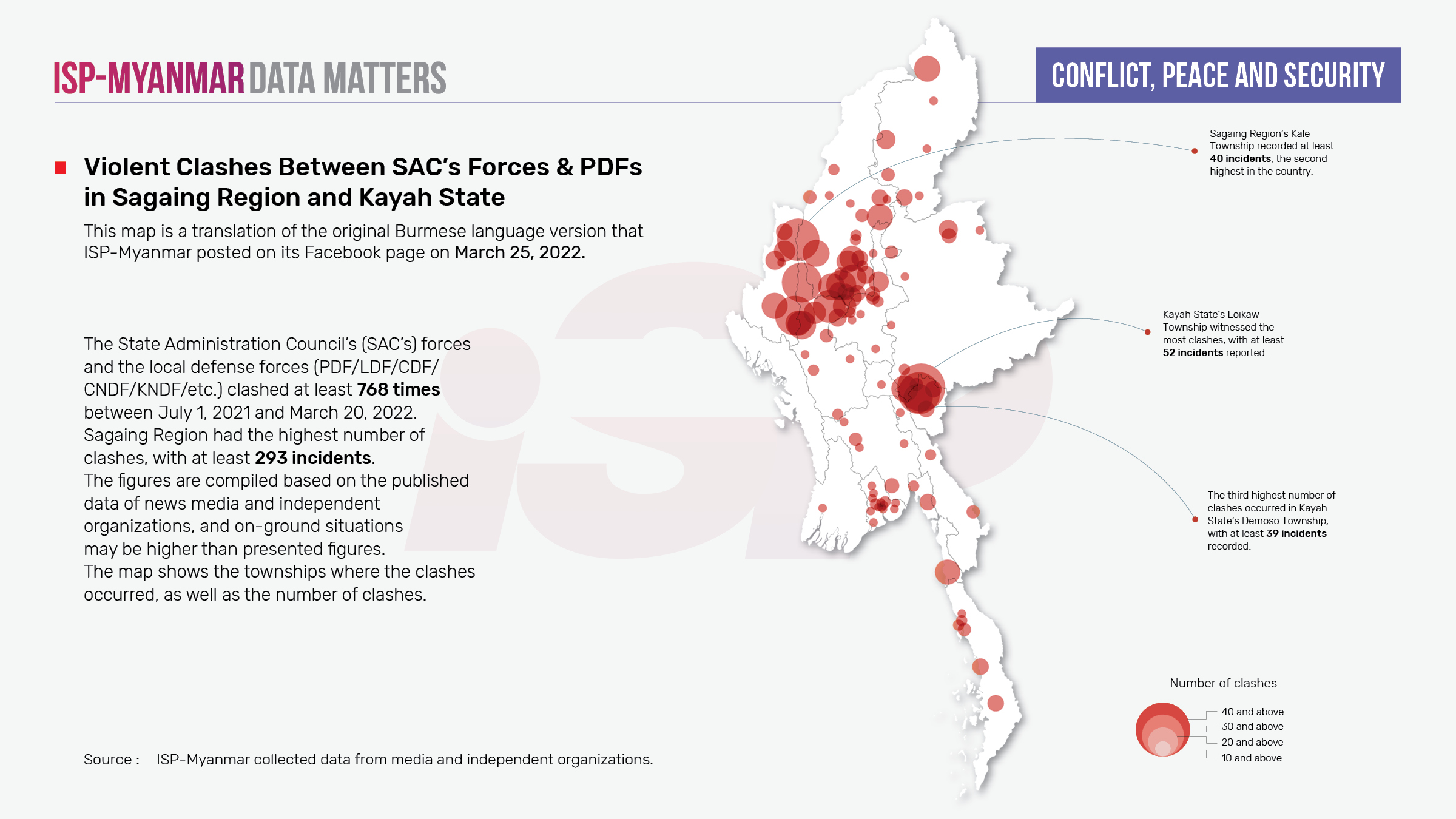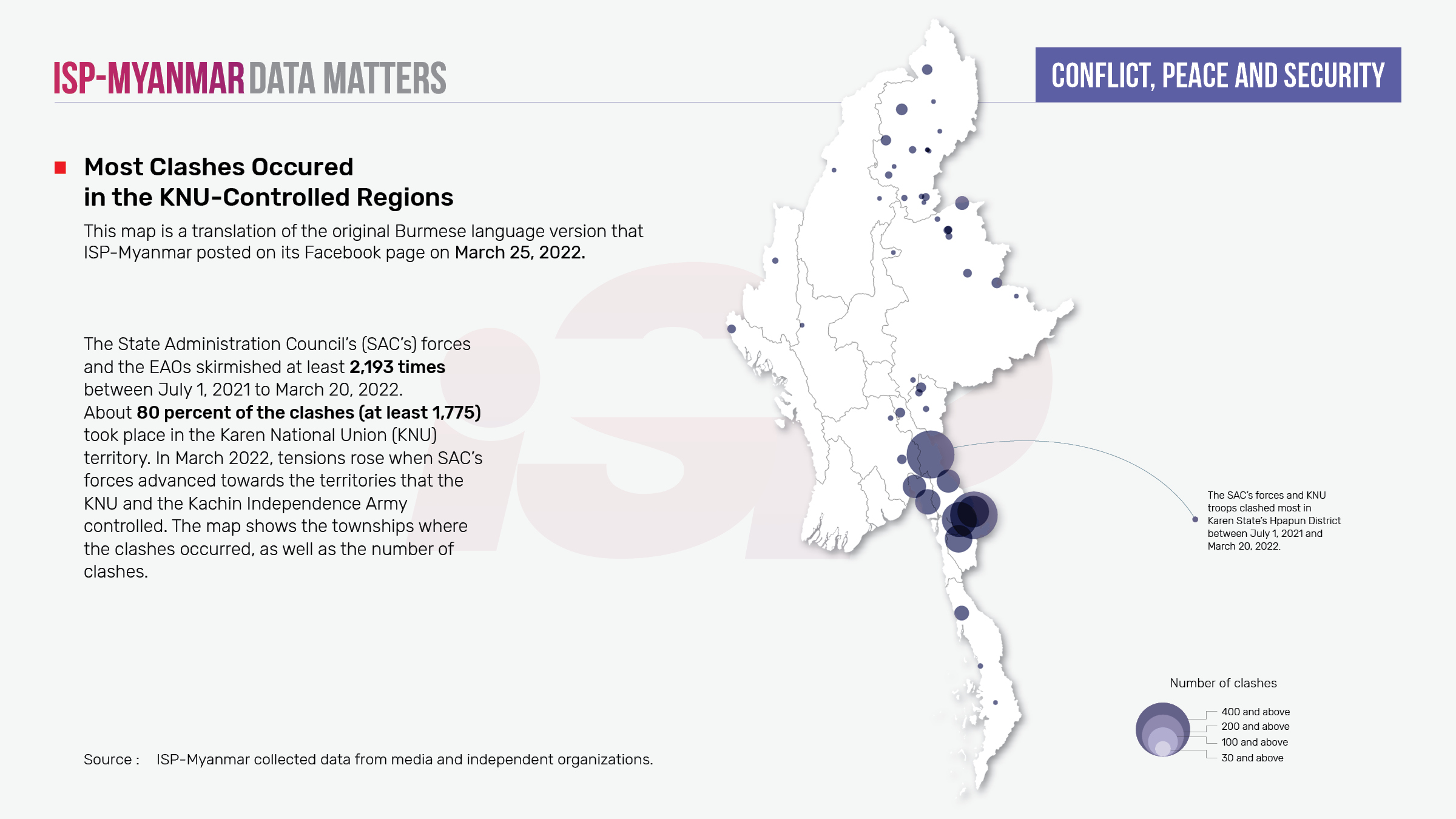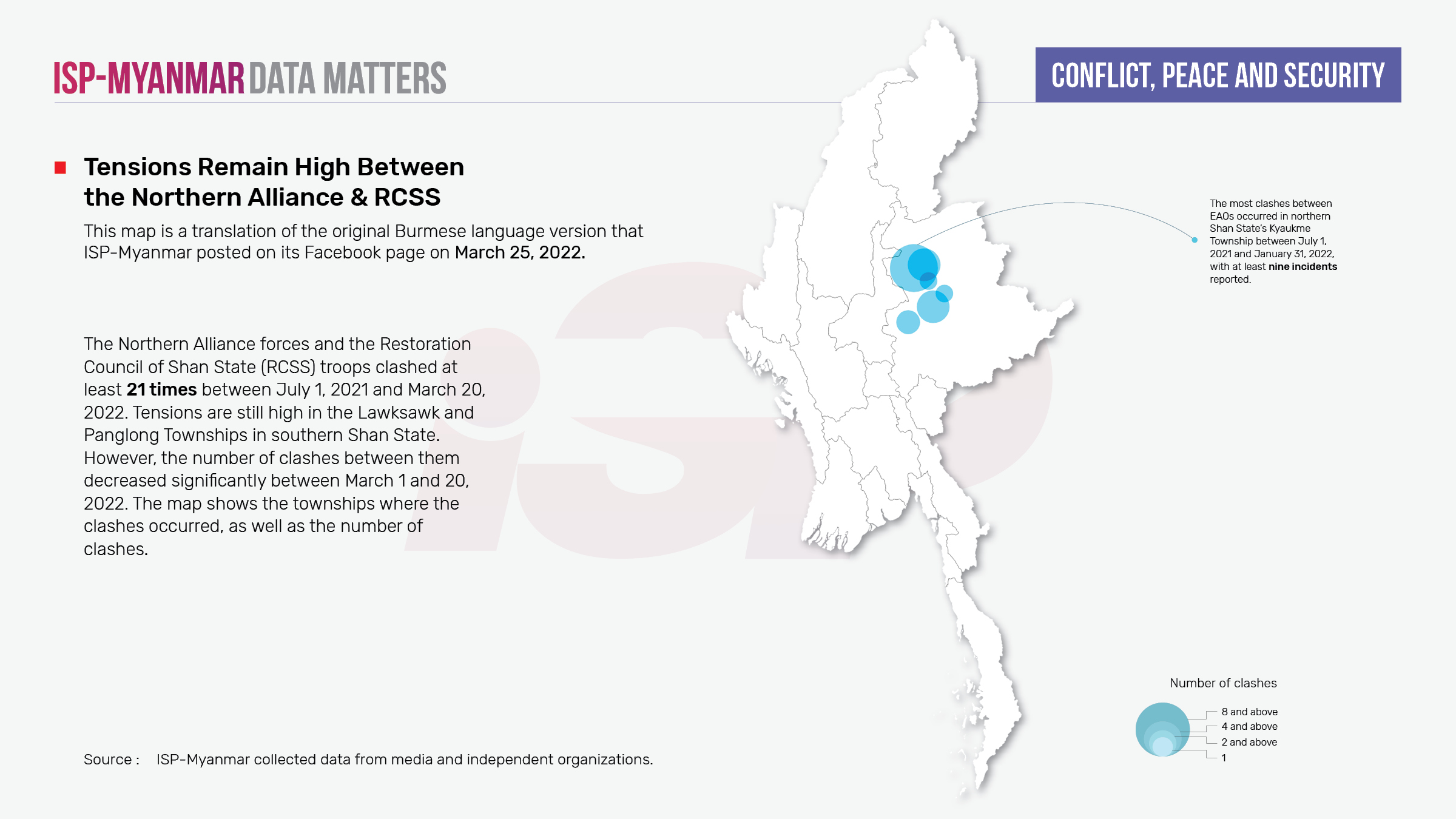Data Matters No. 10
(This article is a translation of the original Burmese language version that ISP-Myanmar posted on its Facebook page on March 25, 2022.)




The State Administration Council’s (SAC’s) forces and various Ethnic Armed Organizations (EAOs) clashed at least 2,193 times in the eight months between July 1, 2021, to March 20, 2022. The clashes took place in the EAO-controlled areas of Karen, Kachin, Kayah, and Chin States. Among these, at least 1,775 clashes took place in the Karen National Union (KNU) territory. On March 19, the SAC’s air force dropped four bombs on Kwi-Lar and Ta-Kat-Pu villages in the KNU Brigade 3-controlled area, raising tensions significantly.
Meanwhile, clashes between SAC’s forces and the local defense forces (PDF/LDF/CDF/CNDF/KNDF) have intensified in various states and regions. Within the eight months between July 1, 2021 and March 20, 2022, at least 768 clashes between the SAC’s forces and local defense forces were reported. Sagaing Region had the highest number of incidents, with at least 293 clashes reported. The figures are compiled based on the published data of news media and independent organizations; it’s likely that the true figures may be much higher.
There were also clashes reported between the Northern Alliance forces and the Restoration Council of Shan State (RCSS/SSA) troops in Shan State between July 1, 2021, and February 28, 2022. Currently, the situation remains tense in Lawksawk and Panglong Townships in southern Shan State. However, the rate of violent clashes between these EAOs did decrease between March 1 and 20, 2022.
∎ Why does it matter?
By looking at the number of civilian fatalities and injuries, how they were killed and wounded, and the number of people displaced by fighting involving SAC’s forces and EAOs, or within EAOs themselves, it is possible to examine whether or not armed forces have committed human rights violations from the perspective of transitional justice. In addition, by studying the post-coup situation, further research can be conducted to examine whether there has been a change in conditions related to Myanmar’s peace process.
∎ Other relevant readings
On-the-ground reports from ethnic news organizations and other independent media groups provide regular updates about conflict situations, their impact, and the collateral damage in the aftermath of the military coup. These include reports of renewed fighting in ethnic areas, civilian fatalities, and rising refugee and IDP issues on the ground. In addition, records and reports by United Nations organizations such as the United Nations Office for the Coordination of Humanitarian Affairs (UNOCHA), and other independent local and foreign organizations also provide information about the ongoing conflict situation in Myanmar.

